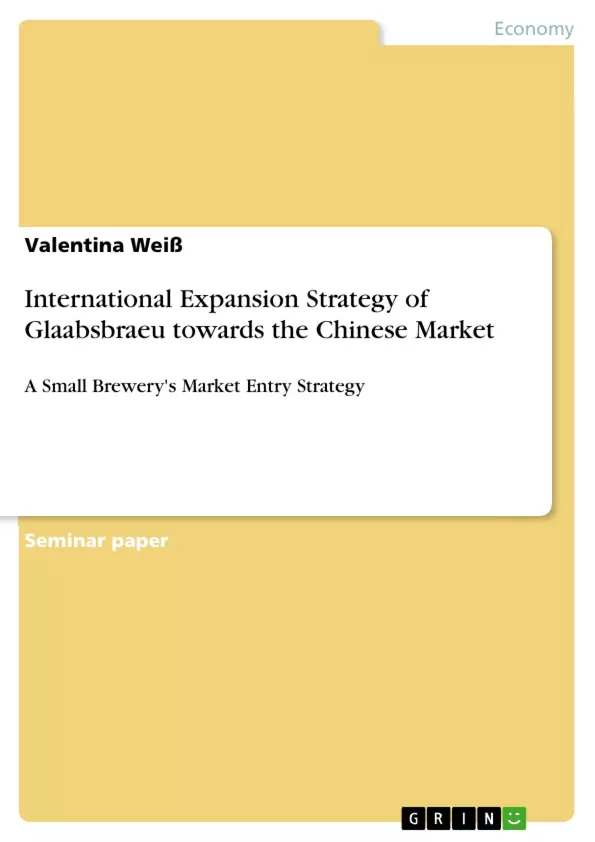In this short paper the internationalization strategy of a small German brewery towards the Chinese market is presented. First, the brewery and its products are introduced shortly. Afterwards, the target market is described. The discussion about the market entry mode follows and the marketing mix ends this report.
The chosen brewery is Glaabsbräu, founded in 1744 and located since in a small town in Hessen, Germany. Glaabsbräu recently went through a modernization process regarding its production, marketing, and products, which makes it a traditional but also a competitive and innovative brewery.
China as a target market was chosen because the task claimed not to thematizes a European country as European beer markets were discussed very detailed in the intensive prominence Erasmus+ program. Moreover, the European beer market is already saturated and aggressively competitive. Whilst the Chinese market, especially the alcohol-free beer and craft beer market is increasing. German products are highly valued in China and to drink foreign beers is considered as a status symbol and represents great taste.
Inhaltsverzeichnis (Table of Contents)
- 1. Introduction
- 2. Glaabsbräu Brewery
- 3. Chinese Market
- 3.1 PESTEL Analysis
- 3.2 Culture Map
- 3.3 Business Environment
- 4. Market Entry Strategy
- 4.1 Entry Mode
- 4.2 Four Ps
Zielsetzung und Themenschwerpunkte (Objectives and Key Themes)
This paper analyzes the international expansion strategy of a small German brewery, Glaabsbräu, into the Chinese market. It begins with an overview of the brewery and its products, followed by a detailed analysis of the Chinese market. The paper then examines the brewery's market entry strategy, focusing on the mode of entry and the marketing mix.
- Internationalization strategy of a small German brewery
- Analysis of the Chinese market
- Market entry strategy for the Chinese market
- Marketing mix for the Chinese market
- Craft beer and its potential in the Chinese market
Zusammenfassung der Kapitel (Chapter Summaries)
The first chapter introduces the brewery and its products. Glaabsbräu is a family-owned brewery founded in 1744 in Seligenstadt, Germany. It recently underwent a modernization process, investing in new facilities, brand identity, and product lines, including craft beers. The second chapter focuses on the Chinese market, analyzing its potential for Glaabsbräu. The chapter includes a PESTEL analysis, a cultural map, and a discussion of the overall business environment.
Schlüsselwörter (Keywords)
Internationalization strategy, brewery, Glaabsbräu, Chinese market, PESTEL analysis, culture map, business environment, market entry strategy, entry mode, marketing mix, craft beer, alcohol-free beer.
- Quote paper
- Valentina Weiß (Author), 2021, International Expansion Strategy of Glaabsbraeu towards the Chinese Market, Munich, GRIN Verlag, https://www.grin.com/document/1003872



